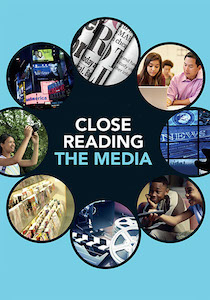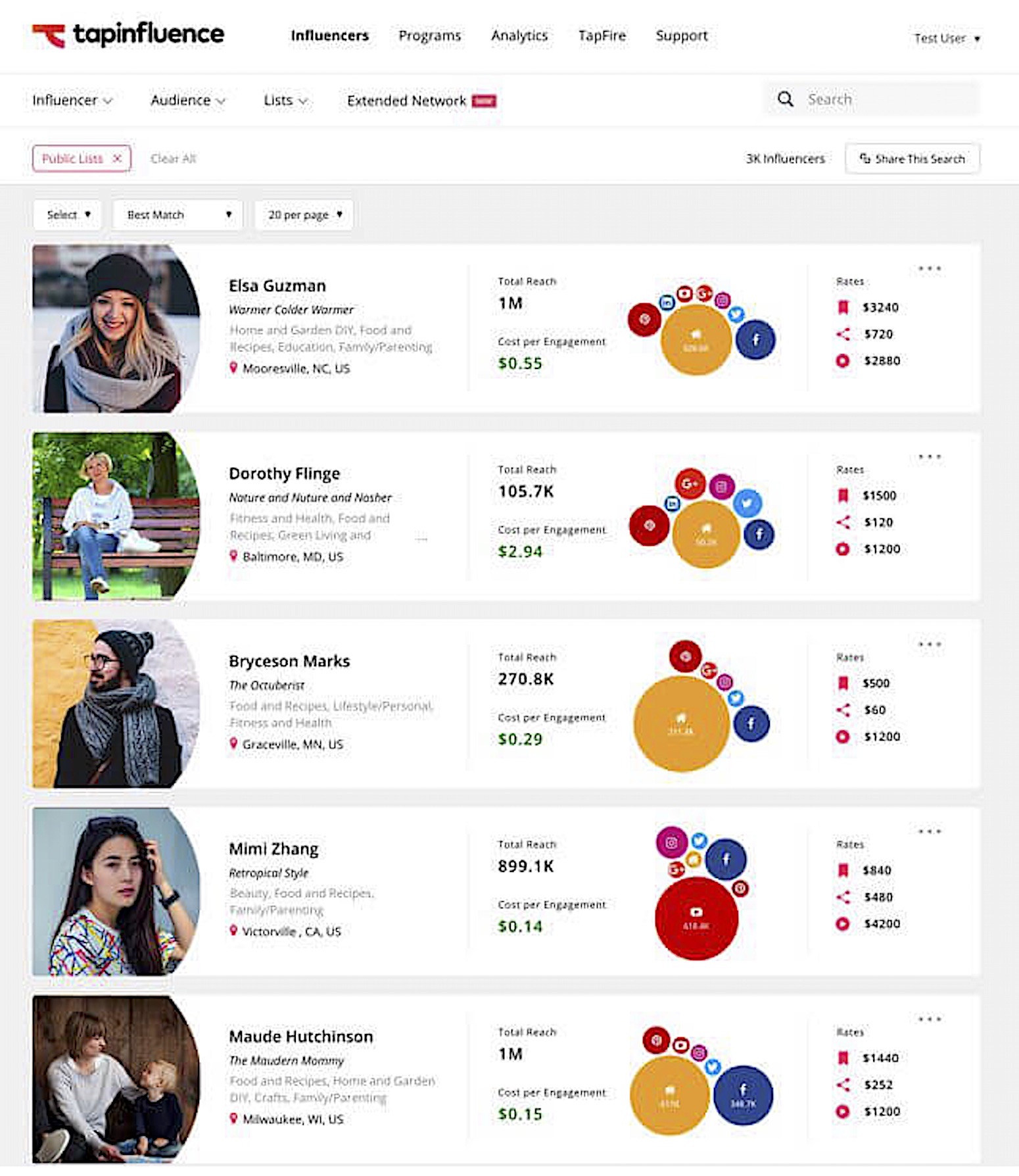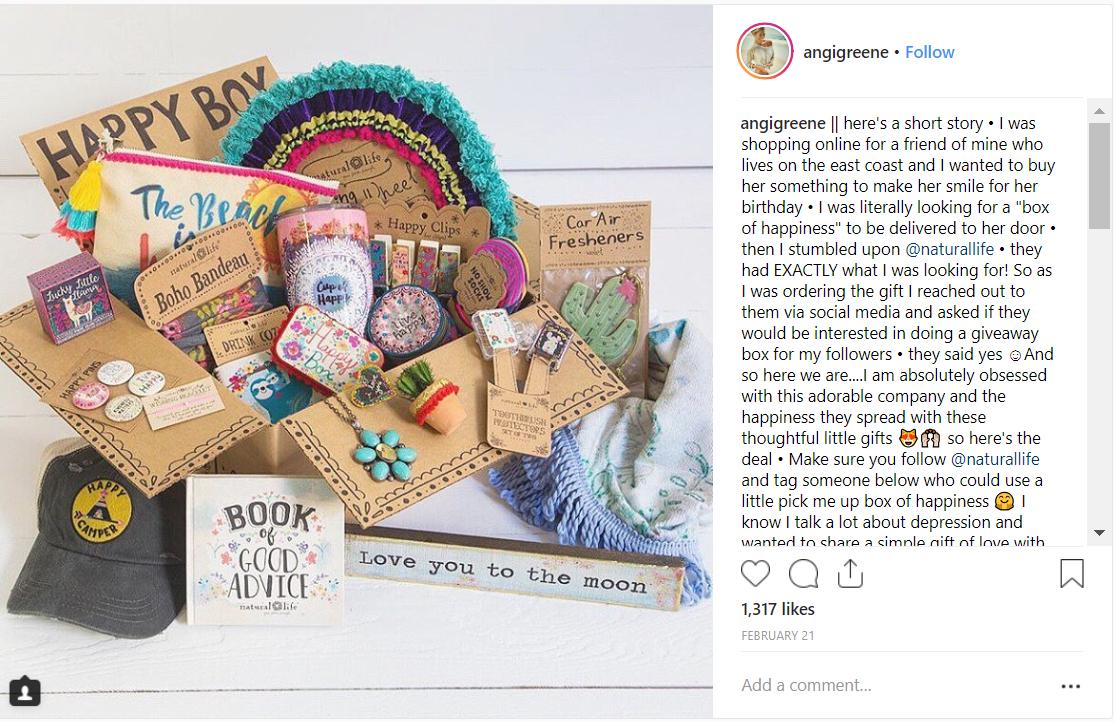Social Media Influencers: Who Can We Trust?
 Guess what, folks. I just purchased four new tires for my car, and I got a GREAT deal. Let me tell you about it. The dealer was having this HUGE sale. Buy three tires and get the fourth free. I want my car to be safe and I want the people riding in my car (especially my granddaughter) to be safe too, so I got the BEST tires for the money. And I received an additional discount because I’m a member of AAA, the auto association. I hope the next time you need tires, you’ll do what I do and go to the Tempting Tire Company. You won’t be sorry.
Guess what, folks. I just purchased four new tires for my car, and I got a GREAT deal. Let me tell you about it. The dealer was having this HUGE sale. Buy three tires and get the fourth free. I want my car to be safe and I want the people riding in my car (especially my granddaughter) to be safe too, so I got the BEST tires for the money. And I received an additional discount because I’m a member of AAA, the auto association. I hope the next time you need tires, you’ll do what I do and go to the Tempting Tire Company. You won’t be sorry.
Did I influence you? Do you trust me enough that when I write about a product, service, or experience, you should consider it too? What if someone paid me to write and post what you just read? Did you consider that? Does it matter to you?
In the 21st century, it’s increasingly difficult to know when someone is trying to convince you to buy something. And because social media is so pervasive and popular with young people, it becomes easier for someone to spread the marketing message super-fast using that medium. That someone is known as an “influencer.” Have you heard that word? Have your students?
I recently wrote this blog post about how important it is for advertisers to get and keep our attention. “Attention” is so hard to grab and so valuable when you do. And that’s what being an influencer is all about.
Influencer marketing has taken off and is one of the hottest topics and sales techniques today. According to this article, influencer marketing works. “A staggering 92% of millennial and Gen Z customers trust product recommendations from influencers versus traditional ads.” If the results of that survey are accurate, expect to see much more influencing-type posts on social media.
Influencing is about connecting, and that’s what marketing revolves around today – making us feel connected with the product and people who use/promote that product.” (Source)
Influencers work by persuading their audience to purchase a product or to consider an idea. On the popular social media platform Instagram, for example, successful influencers “have an established credibility and audience; who can persuade others by virtue of their trustworthiness and authenticity.” (Source)

TapInfluence.com is a registry for influencers (click to enlarge)
Some influencers are well-known personalities whom students would recognize right away. Other influencers are young people, just like them. The key to understanding influencers, I believe, is to apply critical thinking/media literacy questions to both the messengers and the message.
Media Literacy Questions
Consider posting these questions where students can read and apply them to an influencer’s social media post:
✻ who is the creator of the message?
✻ what is the purpose of the message?
✻ what techniques does the creator use to make me want to read/purchase?
✻ who is the audience for the message? How do you know?
✻ who or what might be omitted from the message and why?
✻ what do you know (or want to know) about this person or the product they’re pushing?
✻ who benefits from the message? Do you know? How would you know?
To Influence Is to Persuade
In simplest terms, influencers are persuaders. They use words, pictures and sound to sell their message or product. With the rise of influencers, critical thinking, critical listening and critical viewing become more important skills in the middle grades classroom. Influencers also use popular and effective propaganda techniques, including both the celebrity and the “plain folks you can trust” testimonials.
Since the Common Core ELA standards now recommend that we teach “argument,” students could also be encouraged to recognize when social media influencers use ethos, pathos and logos.
Activity Suggestion: Ask your students to bring in an “influencer” post. This can be printed from Instagram or downloaded from YouTube. Assign them the task of evaluating HOW the influencer works. What words, images or sounds are used? Which propaganda and argument techniques are at work?
Appealing to the Younger Set
CBSN (the online news network of CBS TV) recently aired a half hour documentary entitled Kid-Influencers with the tagline: “few rules, big money.” The doc profiled the lives of three families whose children are involved in this growing social media trend.
The Campaign for Commercial Free Childhood said in an email to its followers that “This kind of advertising is illegal on children’s television, but on the internet, it seems that anything goes.” In September 2019 the group Truth in Advertising filed a federal complaint about the enormously popular YouTube channel Ryan ToysReview (below). Ask your students if more federal regulation might be needed in the wake of attempts to sell using underage kid influencers?
Apparently, there is big money in the influence game. Some people are making millions. “Influencers with up to 1 million followers can get $10,000 [per post], depending on the platform.” (Source) Have your students read about The 25 Highest Paid Social Media Influencers and Top 25 Top African-American Influencers.
The Federal Trade Commission has previously warned many social media influencers when they have failed to label their posts. Without such warnings, unsuspecting followers don’t always know that they’re being sold a product and may not be as alert to misstatements and exaggerations as they might be if properly informed. [See this 2017 report at the archived Consumerist site: Feds Warn Social Media ‘Influencers’ To Stop It Already With The Stealth Ads]
Closing Thoughts
In today’s online marketing environment, everybody seems to be after the attention of young people – many of whom have money and may not see through all the strategies and tactics of influencers. It becomes increasingly important that educators become familiar with the popular culture trends (like the latest social media apps) that young people are attuned to.
I believe it is incumbent on us to find ways to bring students’ own media and culture into the classroom as hooks for interest and engagement. More educators are discovering this as the competition for student attention grows. It’s the smart way to keep yourself up to date and connected with the kids you teach.
Recommended Reading/Viewing
► This article is written for marketers, letting them know why hiring influencers can pay off. (May not be appropriate for student use.)
Each influencer carries with them their own individual brand, which in turn attracts a niche follower group within their industry. As a brand, it’s more important than ever to define your buyer’s persona and know what your target audience is, because with these you will be able to choose the influencer to best help get your campaign to the audiences that are key to your business. (Source)
► Five Influencer Marketing Trends That Will Shape 2020 (Forbes). “Love it or hate it, influencer marketing isn’t going to disappear anytime soon,” says marketing expert Danielle Wiley.
► FTC Announces New Review of Influencer Marketing Disclosures, and Potential Penalties (Social Media Today, 2020)
► Why YouTube Stars Influence Millennials More Than Traditional Celebrities (Forbes, 2017)
► Here’s How Much Money Real Influencers Actually Make, and How (HuffPost, 2019). Perhaps more realistic stories about the income influencers make, including a former teacher.

► How celebrities shape our views about health (Nutrition Action, 2019)
► How Upstate S.C. Influencers Make Money on Digital Platforms (Greenville SC News, 2019)
► I recently started posting a Media Literacy Word/Phrase of the Week on my Twitter account and my Media Literacy Clearinghouse Facebook page. There are so many new words (like influencer) and phrases (like algorithm bias) that I believe our students should know, recognize, and understand. I recommend that educators introduce the word/phrase by having students locate it in the news and become familiar with it.































